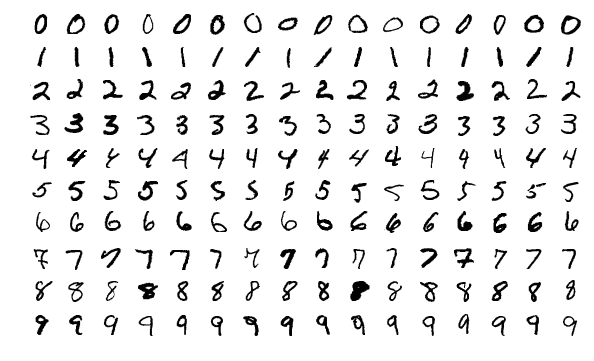An implementation of a Multilayer Perceptron (MLP) neural network from scratch in Rust, to recognize handwritten digits.
This project was created following 3Blue1Brown's Neural Networks series. The goal of is to implement a Multilayer Perceptron (MLP) neural network from scratch in Rust, and use it to recognize handwritten digits from the MNIST dataset.
This project is personal does not, unless otherwise stated, follow any other tutorial or guide; all the code is original.
The neural network is a simple Multilayer Perceptron, whose activation function can be chosen between sigmoid or ReLU. For this specific task, the input layer has 28 * 28 = 784 nodes (neurons) and the output layer has 10 nodes; intermediate layers can be added. The actual prediction is chosen by the index of the node with the highest activation.
The network is trained using Stochastic Gradient Descent. The training set is split into mini-batches of customizable size. The gradient of cost function with respect to each weights and biases, of each layer, is computed using backpropagation. This process can be repeated multiple times by choosing multiple epochs.
This project uses Cargo. With rust installed on your machine, you can execute the code by running, while at the root of the project:
$ cargo runBy default, the program is configured to train a small network, to test it, and to save it. You can change the parameters (described below) in the main.rs file, and switch the LOAD_NETWORK boolean to true to load a network from a JSON file instead of training it each time.
Unit tests are also configured for multiple parts of the project. You can make sure that everything is working by running:
$ cargo testYou can play with the parameters of the network to try to achieve better results:
LAYERS: the number of neurons of each layer.The input and output layer must remain the same,
28*28and10, otherwise the program won't work.TRAIN_LENGTH: the number of images used for training.VALIDATION_LENGTH: the number of images used for validation.After each epoch, if
VALIDATION_LENGTH != 0, the program will test the currently trained network on the validation set.TEST_LENGTH: the number of images used for testing.BATCH_SIZE: the size of one mini-batch used for Stochastic Gradient Descent.Note that
TRAIN_LENGTHshould be a multiple ofBATCH_SIZE, otherwise a warning will be triggered.EPOCHS: the number of epochs, i.e. the number of times that the network will train on one image.LEARNING_RATE: also called η (eta); the factor by which the gradient is multiplied when adjusting weights and biases.- Activation function: the non-linear function used for each synapse.
Reference parameters can be seen in the first row of results.
The dataset used for both training and testing is the MNIST dataset, which contains 60,000 training images and 10,000 testing images of handwritten digits. The images are 28x28 pixels, and the digits are centered in the middle of the image. Examples of the images are shown above.
| Accuracy | Layers | Training images | Testing images | Batch size | Epochs | Learning rate | Activation function | Training time |
|---|---|---|---|---|---|---|---|---|
| 91.9% | 784, 16, 16, 10 | 10 000 | 1 000 | 10 | 30 | 3.0 | Sigmoid | 478s |
| 90% | 784, 16, 16, 10 | 50 000 | 1 000 | 10 | 3 | 3.0 | Sigmoid | 232s |
| 73.3% | 784, 10 | 50 000 | 1 000 | 10 | 3 | 3.0 | Sigmoid | 137s |
| 91% | 784, 100, 50, 10 | 50 000 | 1 000 | 10 | 1 | 3.0 | Sigmoid | 503s |
| 88.9% | 784, 300, 100, 50, 10 | 50 000 | 1 000 | 10 | 1 | 3.0 | Sigmoid | 1 691s |
Note: training time is only given as an indicative way to compare between two different trainings. My code, especially the linear algebra part, is not optimized, and performance varies with CPU model and parallel usage.
This work is licensed under the CC-BY-NC-SA 4.0 license.

